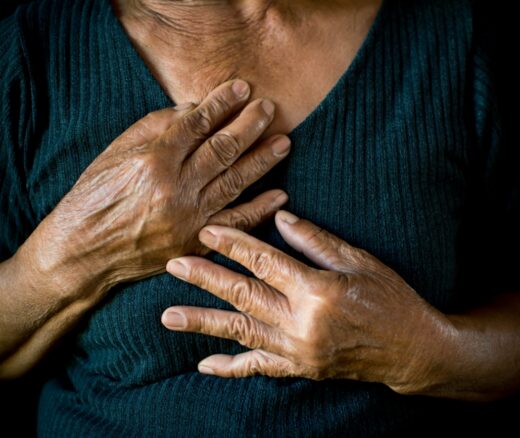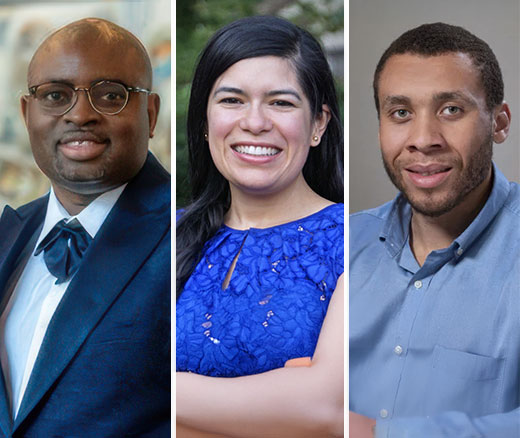
Black Older Adults With Cancer Are Far Less Likely to Get Any Care
New Study From LDI and MD Anderson Finds That Black and Low-Income, Dually Eligible Medicare Patients Are Among the Most Neglected in Cancer Care
Blog Post

Each week in my clinic at Penn’s Department of Family Medicine and Community Health, I see the human toll of Philadelphia’s gun violence crisis. Behind the headlines and statistics are the many victims and relatives I have seen whose lives have been forever altered by firearm injuries. To understand the scope of this crisis, particularly its impact on young Black males in our city, I worked with LDI Senior Fellow and epidemiologist David Mandell, ScD, and LDI Senior Fellow and injury science expert Therese Richmond, PhD, RN, to conduct a study that reveals the extraordinarily high probability that Black teenage boys will be shot or killed.
We started with 4,501 14-year-old Black males in Philadelphia and projected their outcomes based on 2022 firearm injury rates at each year of age. Using life table analysis—the actuarial methods insurance companies use to assess risk—we analyzed Philadelphia’s gun violence data from the Philadelphia Police Department Statistics Unit and City Controller’s Office to project the number of gun injuries based on current experience.
Our findings are devastating: a 14-year-old Black male in Philadelphia has a 1 in 8 chance of being shot or killed by a firearm before reaching his 25th birthday. In stark contrast, non-Hispanic white 14-year-old males face a 1 in 100 chance of firearm injury or death by age 25. It’s important to remember that our estimates are for the whole city; in Philadelphia’s most segregated Black neighborhoods, these risks are likely much higher.
This crisis demands action. Behind each injury and death is a young person whose shooting sends shockwaves through families, schools, and neighborhoods. The trauma ripples outward, affecting siblings who struggle to focus in school, parents who fear for their other children, and communities that bear the collective weight of loss and grief. When a young person is shot, the impact extends far beyond the physical injury; it reshapes family dynamics, disrupts educational paths, and leaves lasting psychological scars that can span generations.
(1) Youth engagement and support:
(2) Community and environmental interventions:
(3) Trauma, mental health, and support services:
While Philadelphia city and neighborhood leaders have initiated many of these programs, they need to be expanded with secure funding to achieve a lasting impact. These interventions alone cannot solve this crisis. The upstream causes of gun violence—entrenched poverty, systemic inequality, the compound effects of racism and socioeconomic disadvantage, and easy access to guns—requires broader structural changes. This is simultaneously a public safety emergency and a public health crisis that demands a coordinated response across all sectors of society.
When presented with these statistics, people sometimes ask if I feel discouraged. Instead, I see opportunities for change. Every percentage point reduction in the risk of firearm injury or death means dozens of young lives preserved each year and families spared from trauma. We should be encouraged that shootings have fallen significantly since 2022.
As both a researcher and physician serving Philadelphia’s communities, I urge policymakers, community leaders, and residents to use these findings as a catalyst for change. The scale of this crisis is clear—the question before us is not whether to act, but how quickly and decisively we will respond to protect our city’s youth.
The study, “Trapped in Violence: A Life Table Analysis of Firearm Injury and Death Among Adolescent Black Males,” was published on July 26, 2024 in the Journal of Adolescent Health. Authors include Rebecca Arden Harris, Therese Richmond, and David Mandell.


New Study From LDI and MD Anderson Finds That Black and Low-Income, Dually Eligible Medicare Patients Are Among the Most Neglected in Cancer Care

Equitably Improving Care for Hospitalized Kids Who Experience Cardiac Arrest Requires Hospital-Level Changes, LDI Fellows Say

Billing Codes That Flag Food, Job, or Housing Insecurity in Medical Records are Underused for the Sickest Medicare Patients

Experts Say Nursing Ethics Can Help Researchers Confront Federal Disinvestment, Defend Science, and Advance Health Equity

Study Finds Major Gaps in Cardiac Care Behind Bars

Eighth Year of Program That Recruits, Mentors and Develops Junior Faculty for Health Services Research